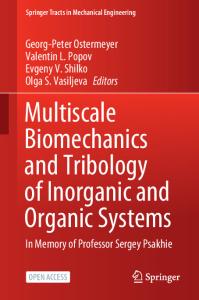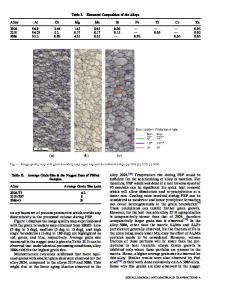Friction Stir Processing Technology: A Review
- PDF / 1,895,466 Bytes
- 17 Pages / 593.972 x 792 pts Page_size
- 35 Downloads / 322 Views
ODUCTION
FRICTION stir welding (FSW) is a new solid-state joining technique invented at The Welding Institute (TWI) (Cambridge, United Kingdom) in 1991.[1,2] The basic concept of FSW is remarkably simple. A nonconsumable rotating tool with a specially designed pin and shoulder is inserted into the abutting edges of plates, to be joined and then traversed along the line of joint when the shoulder touches the plates (Figure 1). The tool heats the workpieces and moves the material to produce the joint. The heating is achieved by the friction between the tool and workpieces and by the plastic deformation of the material. Localized heating softens the material around the pin and the combination of tool rotation and translation results in the movement of material from the front to the back of the pin. Thus, a welded joint is produced in solid state. The FSW process is considered to be the most significant development in metal joining in the past decades and is a ‘‘green’’ technique, due to its energy efficiency, environment friendliness, and versatility. In particular, it can be used to join high-strength aerospace aluminum alloys and other metallic alloys that are hard to weld with conventional fusion welding techniques.[3–12] Currently, applications of the FSW technique have significantly outpaced the fundamental understanding of microstructural evolution and microstructure-property relationships. Quite a few successful applications of FSW have been demonstrated.[13–16] Recently, a new processing technique, friction stir processing (FSP), was developed by Mishra et al.,[17,18] for microstructural modification based on the basic principles of FSW. In this case, a rotating tool with Z.Y. MA, Professor is with the Institute of Metal Research, Chinese Academy of Sciences, Shenyang, P.R. China. Contact e-mail: [email protected] Manuscript submitted August 16, 2007. Article published online February 1, 2008 642—VOLUME 39A, MARCH 2008
pin and shoulder is inserted in a single piece of material, for localized microstructural modification for specific property enhancement. For example, a finegrained microstructure for high-strain-rate superplasticity was obtained in the commercial 7075Al alloy through FSP.[17,19] Furthermore, the FSP technique has been used for the fabrication of a surface composite on aluminum substrate,[20] and the homogenization of powder metallurgy (PM) aluminum alloys, metal matrix composites, and cast aluminum alloys.[21–23] Compared to other metalworking techniques, FSP has distinct advantages. First, FSP is a short-route, solid-state processing technique with onestep processing that achieves microstructural refinement, densification, and homogeneity. Second, the microstructure and mechanical properties of the processed zone can be accurately controlled by optimizing the tool design, FSP parameters, and active cooling/ heating. Third, the depth of the processed zone can be optionally adjusted by changing the length of the tool pin, with the depth being between several hundred micrometers and tens of millimeters; it is
Data Loading...











